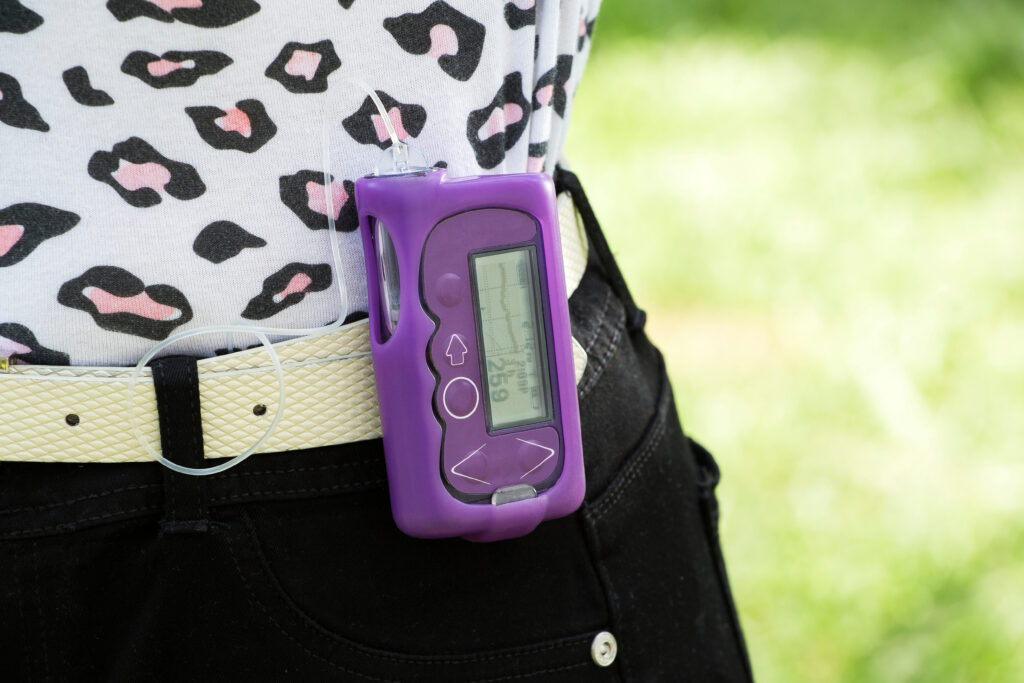How Are Insulin Pumps Being Utilized for Patients with Type 1 Diabetes?
How Are Insulin Pumps Being Utilized for Patients with Type 1 Diabetes? https://pediatricsnationwide.org/wp-content/uploads/2024/04/AdobeStock_312596045-1024x683.jpg 1024 683 Pam Georgiana Pam Georgiana https://pediatricsnationwide.org/wp-content/uploads/2023/07/May-2023.jpg- April 09, 2024
- Pam Georgiana

A multicenter observational study of 22,000 children and adults shows improving quality of life for patients with type 1 diabetes.
Type 1 diabetes diagnoses are increasing among children, particularly those in racial/ethnic minority groups. New technology, specifically insulin pumps and continuous glucose monitoring (CGM) systems, may improve quality of life and long-term outcomes. However, little research has investigated how effective both technologies are when used together in pediatric type 1 diabetes patients.
Kajal K. Gandhi, DO, MPH, an endocrinologist in the Division of Endocrinology at Nationwide Children’s, recently led an observational study that examined trends in insulin pump use compared with multiple daily injection (MDI) insulin regimens and continuous glucose monitoring (CGM) trends, as well as A1C and rates of adverse outcomes within the members of T1D Exchange Quality Improvement Collaborative. The collaborative is a multicenter initiative of more than 40 data-sharing clinical centers throughout the United States.
The observational study, published in Clinical Diabetes, encompasses the medical records of more than 22,000 insulin pump, MDI, and CGM users and type 1 diabetes patients of all ages from 2017 to 2021.
“We were looking for a comprehensive view of the disparities and outcomes insulin pump users were experiencing versus nonusers to highlight how diabetes technology can enhance patients’ lives,” Dr. Gandhi explains.
“We wanted to verify that quality of life is improved with the use of an insulin pump, either with CGM or without it. We also wanted to identify how many patients were using them, as well as disparities associated with accessing and using the technology,” continues Manmohan K. Kamboj, MD, division and section chief of the Division of Endocrinology at Nationwide Children’s, a professor of pediatrics at The Ohio State University College of Medicine, and a senior author of the publication.
The study showed that insulin pump utilization has increased from 59% to 66% since 2017. Users were more likely to be female and have private insurance. Insulin pump use was also significantly higher among non-Hispanic White, as compared with non-Hispanic Black patients. Insulin pump use results in lower mean A1C, increased use of CGM, and lower rates of complications such as diabetic ketoacidosis and severe hypoglycemia. In addition, patients who use an insulin pump with CGM experience even lower A1C, severe hypoglycemia and DKA rates than patients who use a pump without CGM.
Used together, the use of insulin pumps and CGM may provide much better control over type 1 diabetes, according to the study results.
“This new study shows that diabetes technology delivers more accurate, automated and safer care when compared to injection therapy. However, there are significant barriers to access based on health inequities, family preferences, cost, insurance and experience with technology,” Dr. Gandhi explains. “Future work should focus on strategies that advocate for increased diabetes technology use.”
At Nationwide Children’s, ongoing quality improvement initiatives focus on increasing utilization rates of diabetes technology by educating medical providers and families about the benefits of using insulin pumps, providing a diabetes nurse team and coordinator dedicated to helping patients through the implementation process, reducing the required paperwork and insurance approvals, and providing additional support for minority populations that cause barriers to access.
Reference:
Gandhi K, Ebekozien O, Noor N, et al. Insulin Pump Utilization in 2017-2021 for More Than 22,000 Children and Adults With Type 1 Diabetes: A Multicenter Observational Study. Clin Diabetes. 2024;42(1):56-64. doi:10.2337/cd23-0055
Image credit: Adobe Stock
About the author
Pam Georgiana is a brand marketing professional and writer located in Bexley, Ohio. She believes that words bind us together as humans and that the best stories remind us of our humanity. She specialized in telling engaging stories for healthcare, B2B services, and nonprofits using classic storytelling techniques. Pam has earned an MBA in Marketing from Capital University in Columbus, Ohio.
-
Pam Georgianahttps://pediatricsnationwide.org/author/pam-georgiana/
-
Pam Georgianahttps://pediatricsnationwide.org/author/pam-georgiana/
-
Pam Georgianahttps://pediatricsnationwide.org/author/pam-georgiana/
-
Pam Georgianahttps://pediatricsnationwide.org/author/pam-georgiana/August 30, 2023
- Post Tags:
- Diabetes
- Endocrinology
- Posted In:
- Clinical Updates
- In Brief
- Research










